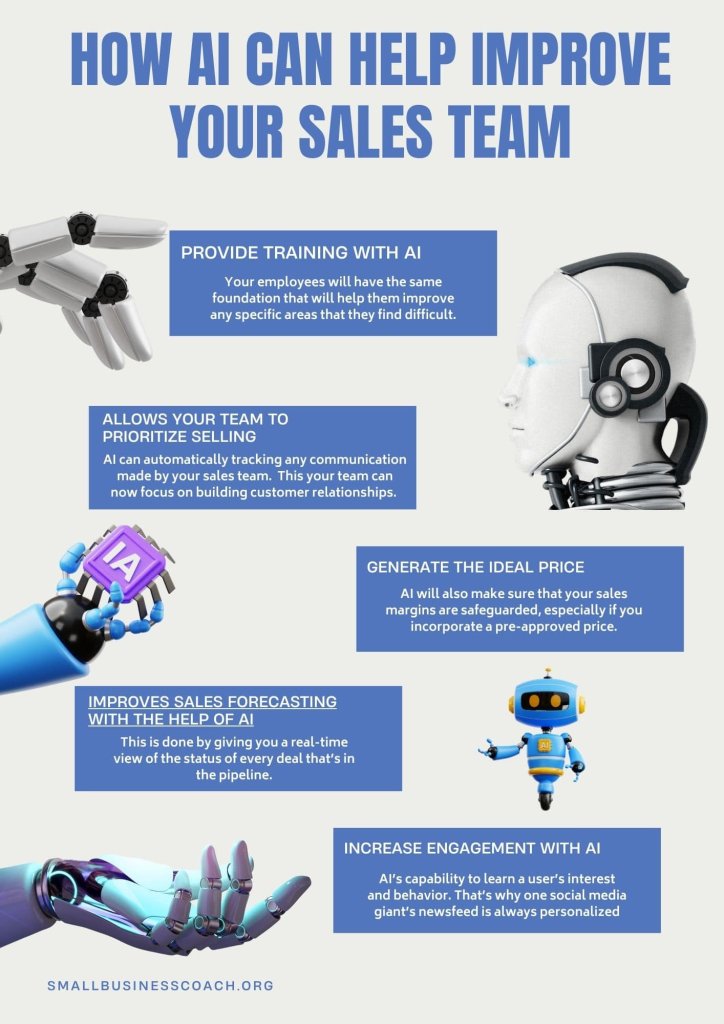Welcome to 2023. An era defined by digital transformation and online tools. Small businesses have a remarkable opportunity to thrive like never before in this climate. And what is the catalyst for this transformation you ask?
Technology and online tools!
Your entrepreneurial aspirations can now be nurtured through the strategic adoption of digital assets. If you’re a small business navigating the digital landscape, this article is your gateway to success.
Business growth hinges on more than just ambition. You must have an approach that includes the cutting-edge technology available in the digital era.
Maximize your online presence
The modern world is heavily digitally dependent. As a result, an impressive online presence is non-negotiable for any business.
Craft a magnetic website
Your online journey begins with a powerful website. This will be your virtual storefront. Modern consumers often decide to engage with a business based on their online experience.
Therefore it’s crucial to have a website that looks good but also functions seamlessly. An outdated, clunky website can deter potential customers. Investing in a clean, user-friendly design is essential.
A slick website reflects your brand’s professionalism and reliability. It’s a valuable platform to:
- showcase your products or services
- share valuable content
- engage with your audience
The user interface should be intuitive. Navigation should be smooth and the overall design must be visually appealing.

Nurture your social media presence
Social media platforms serve as powerful tools for engaging with your audience. From Facebook to Instagram and LinkedIn, you must explore the best practices for building and nurturing your social media presence. This will allow your business to connect and communicate with your target market effectively.
Maintaining a strong social media presence requires consistent, thoughtful effort. Develop a content calendar to ensure regular postings that resonate with your audience.
Engage with your followers. Respond to comments, and encourage discussions. It’s time to use social media to your advantage as a business owner.
Invest wisely
Understanding business valuation
Business valuation is the process of determining the economic value of your business. It takes into account various factors. These include:
- assets
- liabilities
- market conditions
- potential for growth
In-depth knowledge of valuation allows you to evaluate the performance of your company. You can identify areas where improvements can be made.
This insight is invaluable for strategic decision-making. As well as for attracting potential investors or buyers.
Select the right tools
There is an impressive selection of digital tools available for modern businesses. From online calculators to professional software. When choosing the right tool for your business, it’s essential to consider factors such as:
- accuracy
- scalability
- ease of use
Before you select the best tools for the job, you should run an assessment of your business’s needs. It is important to consider scalability when making an informed choice. Your chosen tool should be able to adapt as your business grows.
Furthermore, user-friendliness is vital. This ensures you can extract meaningful data without a steep learning curve, or specialist training.
Ensure smart investments
Investing wisely goes hand in hand with this type of valuation. Knowing the true worth of your enterprise enables you to make informed decisions about:
- expanding
- securing funding
- planning an exit strategy
Small businesses often lack the resources to draft complex legal documents from scratch. Investment agreement templates are made to simplify the process. They ensure that key elements are clearly defined. These include:
- investment terms
- exit strategies
- obligations
Employing these templates will reduce your legal costs. In this sense, you can click here for an investment agreement template that will serve as an invaluable tool for small businesses, as they provide a structured framework for your investment arrangements.
When considering investments and agreements, it’s vital to conduct thorough due diligence. Understand the terms and conditions associated with your investments and ensure they align with your business goals. Using well-crafted templates adds an extra layer of protection and clarity.
They can ensure you to make informed decisions while minimizing legal complexities

SEO strategies for small businesses
A strong online presence begins with Search Engine Optimization (SEO).
The art of SEO
SEO isn’t just a buzzword! It’s a strategy that can shape your online destiny. It’s all about optimizing your website and content to appear prominently in search engine results. Understanding the intricacies of SEO is vital for gaining organic traffic.
This will attract potential customers and outperform competitors. With the right approach, you can secure a spot on that coveted first page of search results.
SEO tools and techniques
Executing successful SEO strategies involves using an array of tools and techniques. From keyword research to on-page optimization, it’s crucial to employ the right resources.
It is common practice to use online tools for keyword research. This can help your copywriters create the best text for your website to rank as high as possible. These include:
- Google Keyword Planner
- SEMrush
- Ahrefs
- Ubersuggest
- Moz Keyword Explorer
To use SEO tools for your own website we recommend the following options:
- Yoast SEO (for WordPress users)
- Screaming Frog SEO Spider
- Google PageSpeed Insights
- GTmetrix
- SEOquake
In order to create captivating content we suggest these tools:
- Grammarly
- Copyscape
- Clearscope
- Hemingway Editor
- Buzzsumo
As backlinks are a hugh part of SEO strategy we advise the use of these analytical tools:
- Moz Link Explorer
- Ahrefs Backlink Checker
- Majestic
- SEMrush Backlink Analytics
- BuzzStream
These tools and techniques are invaluable for enhancing your SEO efforts and boosting your online visibility.
The need for an SEO audit
As we are discussing the world of SEO tools, it’s essential to touch on the SEO audit.
An audit of this nature is a thorough analysis of your website. It can identify issues that may be hindering your SEO efforts. An audit can:
- uncover technical issues
- assess content quality
- check for any backlink problems
Only after this audit can you make informed decisions on the best tools to increase your SEO rankings.
An SEO audit is not a one-time event. It’s an ongoing process that helps your business adapt to the fluid digital landscape.

Online tools for human resources
Today, HR departments can use a myriad of online tools to streamline their operations and enhance employee experiences.
Recruiting and applicant tracking
Effective recruitment is the cornerstone of building a high-performing team. Online tools like Applicant Tracking Systems (ATS) simplify the recruitment process. They enable you to post job listings, screen resumes, and track candidate progress seamlessly. Tools such as:
- Workable
- Greenhouse
- Breezy HR
- Zoho Recruit
- JazzHR
enhance your HR department’s capabilities, ensuring you find the right talent to fuel your business’s growth.
Employee management and engagement
Once you’ve built your team, it’s essential to manage and engage your employees efficiently. Online HR management tools centralize employee data, streamline payroll, and facilitate performance management. Consider tools like:
- Gusto
- BambooHR
- Zenefits
- Namely
- 15Five
These platforms enhance the employee experience and help you maintain a cohesive, motivated workforce.
Learning and development solutions
Investing in employee growth is pivotal. Online learning and development tools empower HR departments to offer training and upskilling opportunities. Platforms like:
- LinkedIn Learning
- Udemy for Business
- Coursera for Business
- TalentLMS
- Skillsoft
allow your business to invest in the continuous development of your employees, ensuring they stay competitive and contribute to your business’s growth.
Cybersecurity essentials
Small businesses are not immune to cyber threats. Ensuring your digital fortifications are in place is essential.
Risk assessment and prevention
The first step in cybersecurity is understanding your vulnerabilities. Perform a comprehensive risk assessment to identify potential weaknesses in your digital infrastructure. Tools such as:
- Nessus
- Qualys
- OpenVAS
- Wireshark
- Shodan
can help you assess your network’s security and detect vulnerabilities before malicious actors exploit them.

Data protection and backup solutions
Data has now become the lifeblood of any business. It is crucial to implement data protection measures such as encryption and access control. In the unfortunate event of data loss, backup solutions are vital. Explore options like:
- Carbonite
- Acronis
- CrashPlan
- Veeam
- Backblaze
to ensure your data is safe and recoverable in the face of unforeseen events.
Employee training and awareness
Your employees are often the first line of defense against cyber threats. Educate your team about cybersecurity best practices, from recognizing phishing attempts to using secure passwords. Tools like:
- KnowBe4
- SecurityIQ
- Wombat Security
- PhishMe
- SANS Securing The Human
can assist in creating a cybersecurity-savvy workforce. This in turn reduces the risk of human error in security breaches.
Your business’s digital odyssey
As we journey through the digital landscape of small business growth, every tool, and every insight, contributes to the profitability of your business. The knowledge shared here is your compass, not the final destination.
In this voyage, your business can become a living testament to adaptability and innovation.
Your small business isn’t just surviving in the digital age; it’s thriving!
The unique fusion of this technology and your vision is the true artistry behind your success. Your canvas is boundless, your potential limitless, in this age of unparalleled opportunities.




























